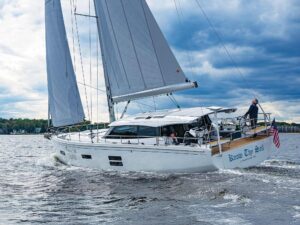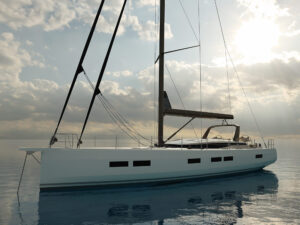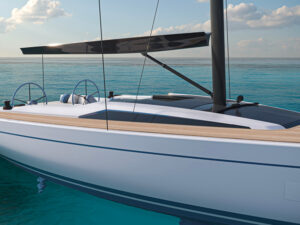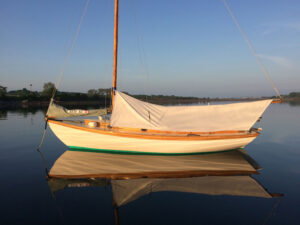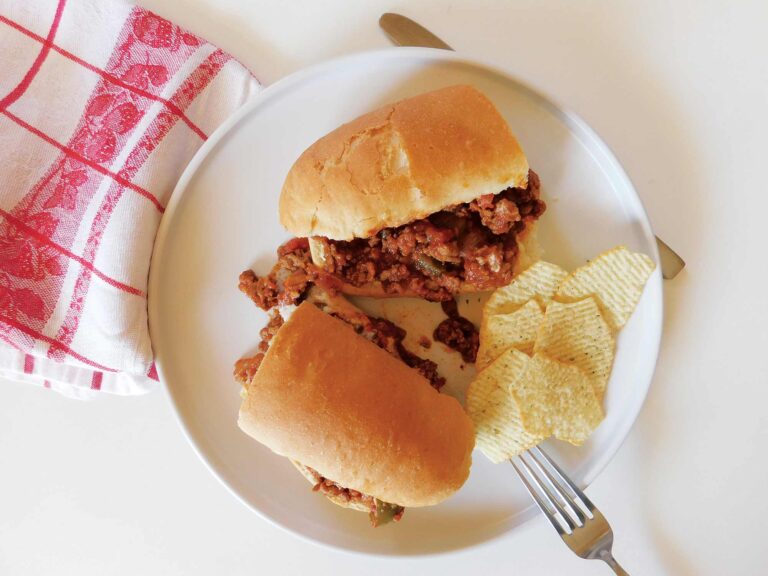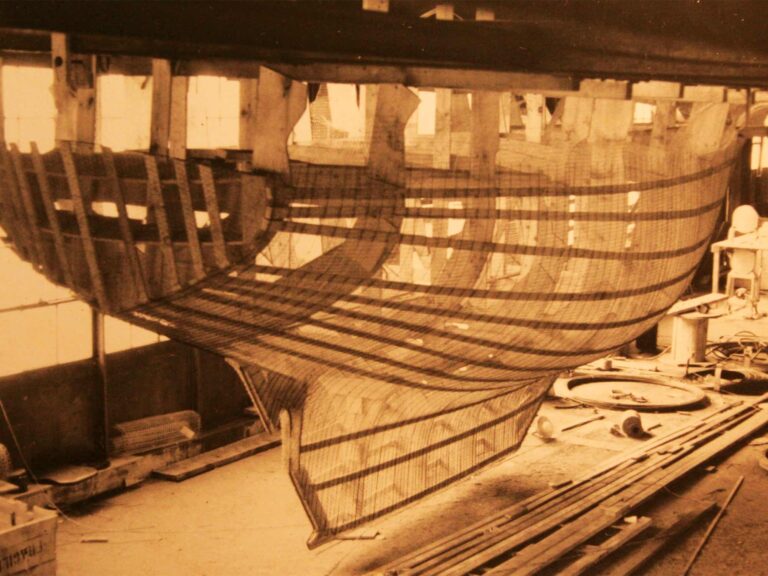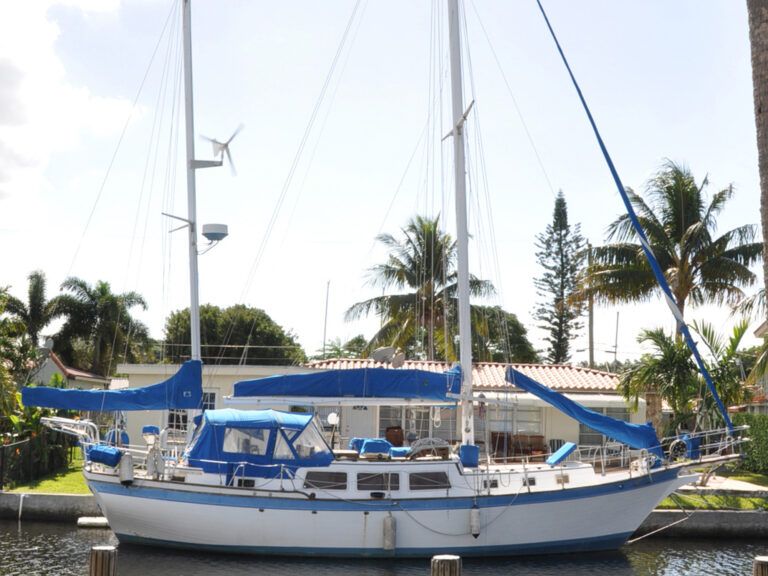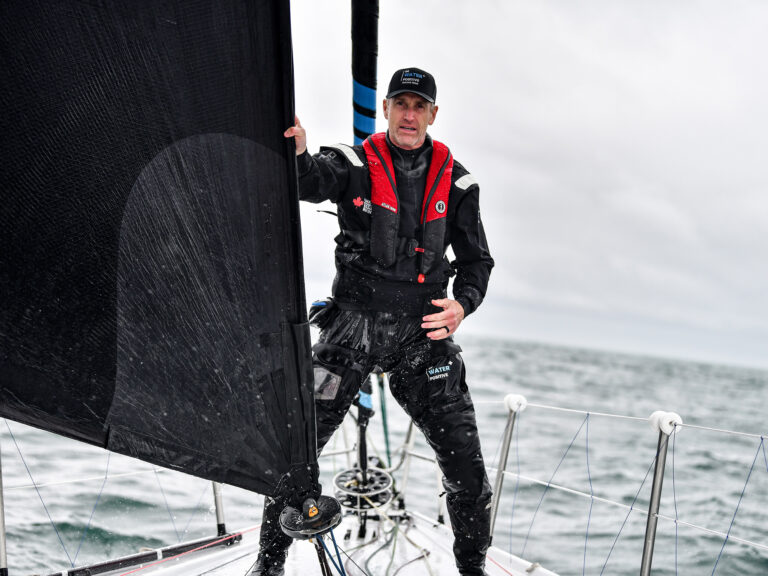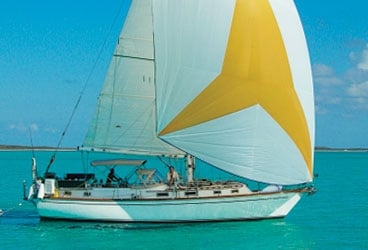
MayRevCollins
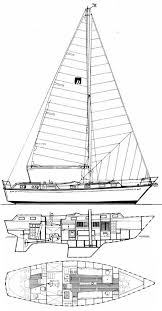
In 1980, when Charlie Carey needed a new boat for The Moorings’ bareboat fleet, he turned to the Mariner Yacht Company, in Rochester, New Hampshire. The result of Carey’s lengthy discussions with yacht designers Eric White and Arthur Berry was the Mariner 39. Of the 29 that Mariner built before folding under the weight of its own high standards, more than half had The Moorings’ charter layout. These boats had inboard shrouds (but another iteration moved the shrouds outboard), a teak rubrail, and an interior more suited for private cruising. Most were sloops, although a few were cutters or ketches.
The Mariner 39 is stoutly built. At the turn of the bilge, the solid-fiberglass hull is 3 inches thick. The underbody has a short fin keel and a separate skeg-hung rudder, with the propeller protected in an aperture. The external lead ballast is attached with Aquamet stainless-steel keel bolts. The boom and keel-stepped mast are by Hall Spars, and the top-quality deck hardware is fastened with through-bolts and backing plates. The 12 opening ports, seven opening hatches, and two fixed ports are aluminum. The balsa-cored deck has solid fiberglass under the deck fittings, and the hull/deck joint is through-bolted every 4 inches.
The center cockpit is large and comfortable, with well-designed high coamings and seats long enough to stretch out on-an ideal arrangement for family liveaboard cruising-and Mariner fit it all in without compromising the boat’s classic New England lines. It’s a handsome boat with a pretty sheer, a wide teak toerail, and teak cabin-side driprails, cockpit coamings, and handrails.
Both layout options have a V-berth forward cabin and a large head/shower with a vanity aft of it. The main saloon has a fixed drop-leaf table and large settees that double as berths. Aft, to starboard, is either a navigation desk or, in The Moorings version, an enormous refrigerator/freezer. The standard galley has a small amount of counter space, a deep double sink, and a two-burner propane stove. A low walk-through leads to the aft stateroom and allows great access to the engine compartment under the cockpit.
The aft cabin, with its own companionway into the cockpit, boasts an enormous berth and another large head with a vanity, storage, and shower.
The rudderstock is prone to crevice corrosion and should be closely inspected. Although the original electrical system was well installed, we rewired our boat to accommodate a larger battery bank, solar panels, an inverter, and a new windlass. We also reworked the interior to better suit our needs: We added storage, enlarged the galley, and built a navigation station.
On paper, we thought the Mariner 39 appeared undercanvased, but while it’s heavy by modern standards, it does remarkably well in light winds. Although designed primarily for the bareboat-charter trade, the Mariner 39 is a fine passagemaker. Examples appear rarely on the market, at prices from $22,000, for one in poor shape, to $115,000, for one well cared for and upgraded.
Mariner 39 Specs
LOA: 38′ 9″ (11.81 m.)
LWL: 31′ 0″ (9.45 m.)
Beam: 11′ 8″ (3.56 m.)
Draft: 5′ 6″ (1.68 m.)
Sail Area (100%): 653 sq. ft. (60.66 sq. m.)
Ballast: 6,000 lb. (2,721 kg.)
Displacement: 18,000 lb. (8,163 kg.)
Ballast/D: .33
D/L: 270
SA/D: 15.2
Water: 150 gal. (569 l.)
Fuel: 80 gal. (303 l.)
Engine: Perkins 4-108
Designers: Eric White and Arthur Berry
Stacey and Neil Collins and their daughter, Olivia, recently sailed their Mariner 39, Zora, from Maine to South America and back. They documented their refit and trip on their website (www.sailzora.com).

